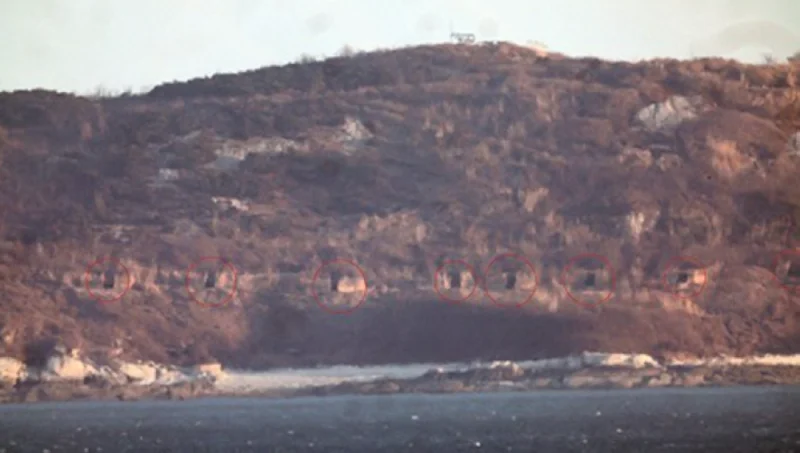Some of the artillery shells recently fired by the North Korean military fell just above the Northern Limit Line (NLL) in the Yellow Sea, a South Korean military source said Sunday, stoking tension on the tensely guarded western border, where past naval skirmishes have taken place.
Most of the North Korean shells splashed into the maritime buffer zone, with some falling in waters as close as 7 kilometers north of the NLL, South Korea's (Yonhap) news agency reported citing the source.
"As North Korea vowed to scrap the inter-Korean military pact and conducted live-fire drills near the maritime buffer zone, mutually agreed buffer zones that ban hostile acts no longer exist," the source said.
The South Korean military is considering taking corresponding measures when North Korea's artillery shells cross the NLL or land near the de facto maritime border.
North Korea fired some 200 artillery shells from its southwestern coastal areas Friday, prompting the South Korean troops on the front-line islands of Yeonpyeong and Baengnyeong to stage live-fire drills in response.
The latest threats came after Pyongyang in November vowed to restore military measures halted under a 2018 inter-Korean military agreement, which set up buffer zones in land, sea and air and banned live-fire drills near the border area to prevent accidental clashes.
North Korea's Friday artillery firing marked the 16th one of its kind, including a missile launch in December 2022. The South Korean military conducted live-fire drills near the maritime buffer zone for the first time since the signing of the 2018 pact.
On Saturday, the North carried out live-fire drills for the second consecutive day, firing around 60 shells from the western coast, which landed in the maritime buffer zone above the NLL.
Naval skirmishes between South and North Korea took place near the western maritime border in 1999, 2002 and 2009.
In 2010, North Korea fired a barrage of artillery shells on Yeonpyeong Island, killing two South Korean Marines and two civilians. (QNA)



